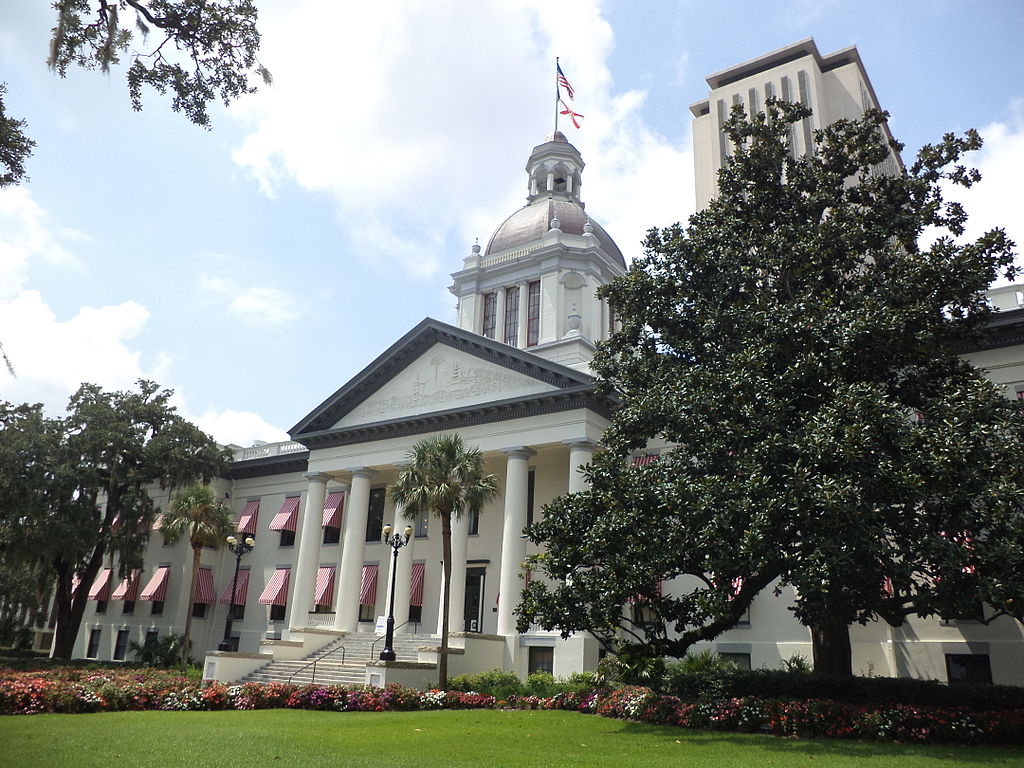Election Administration Challenges in Florida
Florida’s experience voting during the coronavirus pandemic provides a glimpse of some of the issues that have arisen as election officials attempt to expand the availability of mail balloting.

Published by The Lawfare Institute
in Cooperation With

Lawfare is partnering with the Stanford-MIT Healthy Elections Project to produce a series on election integrity in the midst of the coronavirus crisis. The Healthy Elections Project aims to assist election officials and the public as the nation confronts the challenges that the coronavirus pandemic poses for election administration. Through student-driven research, tool development, and direct services to jurisdictions, the project focuses on confronting the logistical challenges faced by states as they make rapid transitions to mail balloting and the creation of safe polling places. Read other installments in the series here.
As Floridians were preparing to vote in the March 17 presidential preference primary, the coronavirus was just starting to garner significant attention within the United States. Although the pandemic did not affect voting in Florida to the degree that it affected voting in states with later primaries, there were signs that Florida’s primary voters shifted their behavior to avoid voting on Election Day—voting early and by mail at greater rates than before. And Florida’s experience previewed two themes that would arise in future primaries. First, the ballots of young, minority and first-time voters who voted by mail were more likely to be uncounted, because the ballots arrived late or were rejected for technical reasons. Second, Florida saw a dramatic dip in voter registrations after the pandemic hit, raising concerns about the status of young voters and those who need to update their addresses for November.
Our full report on turnout, absentee ballots and voter registration in Florida is available here.
A Word About Data
This post provides analysis about voter turnout, absentee balloting and voter registration in Florida based on original analysis of administrative data from the state. Most of the analysis here is based on data from two sets of data: voter registration files—which come from a database of all registered voters in the state—and voter history files that keep track of the voting record of each registered voter. Both types of files are available from the Division of Elections. Other data sources that track voter registration were used as well and are identified later in the post.
Turnout and Vote Method
More than 2.9 million voters turned out for Florida’s 2020 presidential preference primary, compared to more than 3.4 million for the primary in 2016. By party, however, more Democrats cast votes in 2020 than in 2016 (1.7 million as opposed to 1.5 million), reflecting the high level of competition among Democratic candidates in the Florida primary, while Republican turnout dropped (1.2 million as opposed to 2.0 million), as President Trump ran in the Republican primary essentially unopposed.
Unlike most states, which have decided to encourage either mail balloting or early voting as a way to make voting more convenient, Florida has adopted an “all-of-the-above” strategy. Floridians may request a mail ballot without stating an excuse, and all the counties run significant early voting programs. In the 2016 general election, voters were nearly equally distributed across voting mechanisms: voting on Election Day, voting early and voting by mail.
Amid growing health concerns at the time of the primary, many Florida voters shifted to vote-by-mail as their preferred method of participating in the presidential primary—46 percent of voters chose to vote by mail in 2020, compared to 29 percent in 2016. In contrast, Election Day voting fell from 50 percent in 2016 to 32 percent in 2020. Early voting essentially held steady from 2016 to 2020.
These broad patterns were true for both parties, although Republicans were more likely than Democrats to vote by mail in 2020 (55 percent vs. 40 percent).
Viewed another way, in 2016, the two parties were indistinguishable in how their members cast ballots in the primary, with almost exactly half of each party voting on Election Day, 30 percent of each party voting by mail, and 20 percent voting early.
But in 2020, voter behavior diverged slightly depending on party registration. In 2020, Republican Election Day voting declined by 22 percentage points as compared to 2016, while early voting declined another four points. To balance out these in-person declines, the share of Republican voters casting mail ballots grew 26 points. In contrast, the Democratic decline in Election Day voting was only 14 points, balanced by a growth in vote-by-mail of only 11 points and a small, three-point increase in early voting.
The percentage of votes cast by mail increased across all age groups relative to 2016, but there was a larger shift among voters over 60 years old. In 2016, 37 percent of these older voters voted by mail; in 2020, that proportion rose to 53 percent. In contrast, the percentage of voters younger than 60 who used mail ballots also grew but at a lower rate, from 21 percent to 35 percent. In contrast to older voters, most of whom cast their ballots by mail, only 29 percent of the youngest group of voters (18-29 years old) voted by mail, with Election Day voting dominating among this age group.
The percentage of votes cast by mail increased across all racial groups as well. White and Hispanic voters moved away from Election Day voting relative to 2016 (falling 15 and 18 percentage points, respectively). Black voters made a similar shift, though to a lesser degree, dropping in-person voting by 11 percentage points. In 2016, the dominant mode for all racial groups was voting on Election Day; in contrast, in 2020, Election Day voting was the dominant mode for Black voters only. Whites and Hispanics favored voting by mail, albeit by small margins.
Uncounted Mail Ballots
According to the state’s voter history file, 1.3 percent of ballots returned by mail voters in the 2020 primary were not counted. The voter history file does not contain information about why these mail ballots were unsuccessful; however, it appears that mail ballots were not counted due to two major causes: being returned after the deadline, and arriving on time but having a defect that prevented them from being counted.
The uncounted mail ballots were not distributed equally among groups of voters: Democrats (1.6 percent) were more likely than Republicans (1.1 percent) to have their ballots uncounted; Blacks (2.3 percent) and Hispanics (2.2 percent) were more likely than whites (1.1 percent) to have their ballots uncounted; younger voters (3.6 percent among those ages 18-29) were more likely than older votes (1.0 percent among those 60 and older) to have their ballots uncounted; and first-time voters (2.5 percent) were more likely than experienced voters (1.3 percent) to have their ballots uncounted. Differences such as these have been found in studies of previous elections in Florida and Georgia.
These differences in uncounted mail ballots may point to difficulties come November. First, the electorate in a primary is more experienced with voting than the general election electorate; the voters devoted enough to cast a primary ballot tend to know more about the electoral process. With more inexperienced voters in November, there is a real possibility that the rate of uncounted ballots will be even greater. And if there are high numbers of uncounted ballots, it’s more likely that disputes will arise about whether there should be a recount. Given Florida’s battleground status, such a possibility is not out of the question.
The fact that uncounted ballots skewed Democratic, younger and minority suggests that if there is a challenge to the Florida election outcome in November because of uncounted mail ballots, Democrats will be the main beneficiary of getting a court to accept initially rejected ballots.
Voter Registration
Although the presidential preference primary occurred before the brunt of the pandemic hit the state and the nation, voter registration statistics reported since then suggest that the pandemic significantly dampened voter registration activity in the state for several months.
If we look at week-by-week registration numbers through mid-March, registration rates in Florida matched those from the past three presidential election years. Indeed, using reports released by the state that provide greater detail about voter registration patterns than we can see using the voter file, Florida saw a 35 percent increase in the number of registrations through February, compared to the same period in 2016. Then the pandemic hit. For the months of March, April and May, total registrations were down 38 percent as compared to 2016. While overall registration rebounded in June and July, not all groups of voters have managed to ramp up registrations at an equal rate.
Registration numbers for white voters appear to have rebounded more quickly as compared to registration rates for Black and Hispanic voters. And although Democratic registrations were strong at the start of the year, Republican registrations have outpaced Democratic registrations for June and July (the last two months for which there is reported data).
Reports from the state show that the pace of registrations historically picks up as the November presidential election approaches, but the challenges of registration during the pandemic and the continued severity of the virus in Florida may also prove to be sizable obstacles to recovering what was looking to be a record general election turnout before the pandemic, especially among minority voters.
Conclusion
Florida’s experience voting during the coronavirus pandemic provides a glimpse of some of the issues that have arisen as election officials attempt to expand the availability of mail balloting. But Florida’s experience with the 2020 primary may not be entirely generalizable to other states. First, Florida has been relatively divided among voting modes for many years, and all counties have experience running significant vote-by-mail operations. As a consequence, although Florida’s voters shifted away from Election Day voting in the 2020 presidential preference primary, there was also a fair amount of continuity in voting patterns across the state. Second, since the March primary came before the pandemic fully arrived in the U.S., Florida’s voters and election officials did not face the full effect of the challenges presented by voting during the pandemic.
Nonetheless, lessons from Florida may help predict how adaptations related to the coronavirus will play out both in Florida and in other states. First, amid rising health concerns, Florida voters shifted swiftly to voting by mail across the state. Second, although political elites are polarized on the issue of mail balloting, with Republicans and Democrats associated with anti- and pro-mail positions, respectively, it was Republicans who were more likely than Democrats to shift to vote-by-mail. This isn’t just a product of age or other demographic factors; even controlling for other factors, Republicans were still more likely to make the change to use vote-by-mail. Third, elderly voters shifted to mail balloting to a much greater degree than younger voters. Fourth, minority voters and young voters were more likely to vote on Election Day than white and older voters—even taking into account political party affiliation.
Finally, the experience of first-time voters suggests that these voters are at greater risk of not having their votes accepted for counting. The number of first-time voters overall was relatively small in the presidential primary, representing only 6 percent of ballots cast, but this fraction will be much larger in the general election. It is impossible to predict how much larger those numbers will be, but in the 2016 presidential election, 15 percent of voters were casting a vote in Florida for the first time, and another 10 percent were casting a ballot for only the second time. (The median voter was casting a ballot in his or her sixth election.)
In thinking about what the 2020 general election will look like in Florida, a number of considerations need to be kept in mind. For starters, by November, the state will be in a different position vis-a-vis the pandemic than it was in mid-March. Back then, the coronavirus was just beginning to impact daily life in the United States. Since then, Florida has suffered from one of the nation’s most severe infection spikes. If the continued severity of the virus and the recent Aug. 18 state primary is any guide, demand for mail ballots will likely persist into November.
The general electorate will also be quite different from the presidential primary electorate. For one thing, it will contain more Republicans who may be more likely to vote by mail. On the other hand, the general election will also include more young and first-time voters, who have generally been more likely to vote in person even in the face of infection worries.
Given these factors and what we have seen from the March 17 primary, as well as other primaries held since then, Florida seems poised to experience record levels of mail balloting in November, with in-person voting likely to remain robust as well. Given Florida’s recent history, in-person voting may occur predominantly during the early voting period, not on Election Day. Either way, the state’s election officials still have a lot of work to do to ensure that all forms of voting in November will be safe, secure and accessible.




